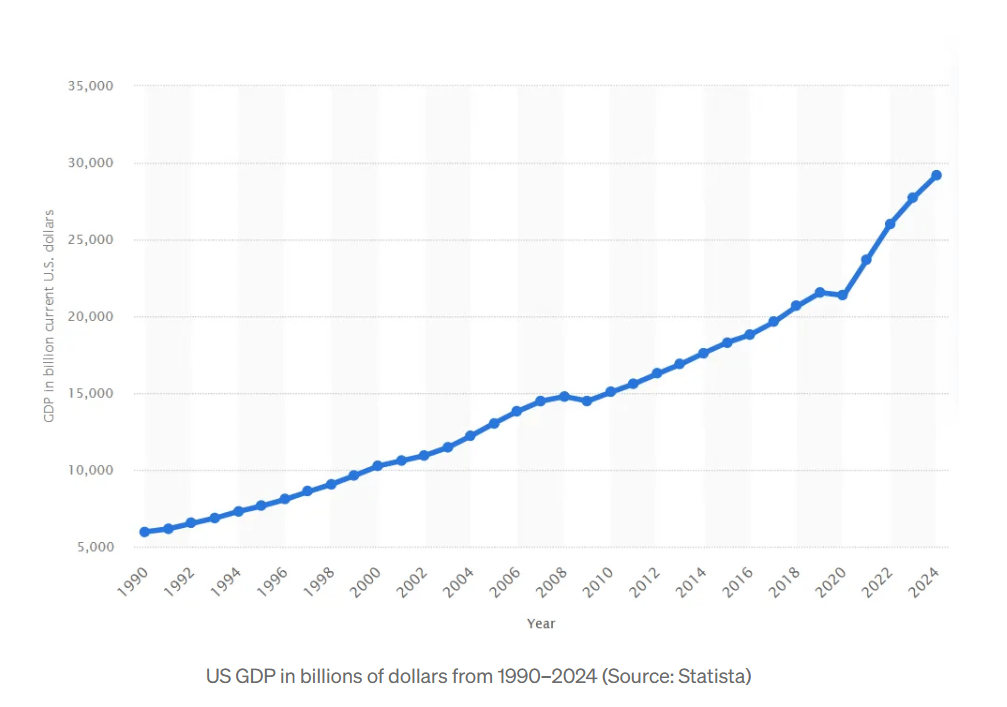Is GDP an Irrelevant Metric?
Kate Wexell
9/19/20254 min read


Frequently, gross domestic product (GDP) is referenced as the most important metric to measure a country’s success. Similar to how people are deemed “successful” based on their income, a country is measured by its wealth.
GDP measures the market value of the output of final goods and services in one country’s economy. This means positive economic growth is measured by the value of products continuing to increase.
The issue is that a positive increase in GDP typically requires an increase in both consumption and production of goods and services.
Currently, President Trump is focusing on increasing localized manufacturing in the United States.
While this will increase GDP, it has horrific implications for the United States and the rest of the world.
Trump’s Impending Policies
Immediately, Trump’s policies seem rational. For decades, the United States has been dependent on foreign manufacturing and mineral resources in locations that are frequently at war.
As tensions build in the Middle East, China, and Russia, Trump is trying to alleviate the pressure.
If the United States is self-sufficient, it doesn’t need to become involved in complex geopolitical scenarios. In the short term, this is understandable from an isolationist ideology.
However, good policy is designed for long-term prosperity. In the long term, local manufacturing has a significant impact on the United States.
The Implications of Increased Manufacturing
In April 2025, President Trump issued a national emergency on localized manufacturing. The White House stated that the US had a “hollowed out” manufacturing base that “undermined critical supply chains.”
The result was imposing high tariffs and promoting internal manufacturing of automobiles, ships, pharmaceuticals, transport equipment, technology, machine tools, and fabricated metals.
Vice President JD Vance cited Midwestern car manufacturing as a focus point of his 2024 campaign. In Trump’s national emergency press release, the White House cited that US automakers are losing $13.5 billion in annual exports.
To recover this income, this would require the creation of 450,000 new cars per year. This represents a 5% increase from current levels. Overall, that creates an increase of 11 million tons of CO2 over the vehicle’s lifetime per year.
Additionally, factories are often built next to low-income neighborhoods. Manufacturing in chemicals, metal plating, finishing, and recycling causes an increased exposure to arsenic and lead, which is passed prenatally to infants.
While the effects of current changes are low compared to the global impact of manufacturing, it sets a dangerous precedent to move towards increased production rather than reducing reliance on these products overall.
High GDP Doesn’t Equate to Quality of Life
Despite the United States having the top GDP in the world, its rankings for quality of life hover around 20.
Many of these rankings are focused on differences between the US and European countries in purchasing power, wealth inequality, pollution levels, housing affordability, cost of living, safety, healthcare, commuting times, and climate conditions.
GDP has continued to increase in the United States, but is primarily concentrated in the wealthy elite of California and New York City. Just the state of California is the fourth-wealthiest economy in the world. In 2021, Bloomberg stated that 32% of the United States' GDP was composed of just 31 counties.
Within the state of California, there is a mass exodus, increasingly high housing prices ($1M per 1,000 sqft is typical in cities like San Diego, Los Angeles, and San Francisco), and high rates of homelessness tied to extreme wealth disparity.
Meanwhile, the United States lacks many social programs that are shared by its counterparts in countries like Denmark, Sweden, Finland, and Norway. Some of these include universal healthcare, universal childcare (recently adopted by the state of New Mexico), free education, and stipends for the homeless to become rehoused.
Interestingly, a 2001 study by Harvard stated that there was no economic reason for the US not to replicate these programs, but rather it was a societal pressure on policy makers since the average American believes that poor people are “lazy” while Europeans tend to believe they are “unfortunate.”
So despite the immense wealth of the United States, it still doesn’t provide an equivalent quality of life to countries with similarly developed economies.
The Global Impact of the United States' GDP
The United States is already second in the world for manufacturing output. It produces 18 percent of global manufacturing.
Almost 5 billion tons of CO2 are emitted from the United States annually. It is the second-largest emitter in the world, after China. It also has a higher per capita rate than both China and India.
It is estimated that every one trillion tons of CO2 causes a half-degree increase in global temperature. If the United States existed in isolation, it would take 400 years to warm the planet by one degree. In conjunction with other countries, it will raise the temperature of the planet by one degree in twenty years.
The impact of these emissions most affects countries with some of the lowest carbon emissions, such as Chad, the Democratic Republic of the Congo, Guinea-Bissau, Sudan, and Afghanistan.
These countries are impacted by a higher risk of flooding, drought, and other natural disasters. Countries like Tuvalu are already evacuating because the country is no longer livable.
Better Metrics than GDP
Rather than thinking about GDP and strengthening the United States as a manufacturing giant, it is important to consider better metrics for success, such as the environment and quality of life.
By considering those two factors, the United States could reorient its focus to provide more amenities to its citizens and lessen its impact on the planet rather than maintaining arbitrary control over global economics.